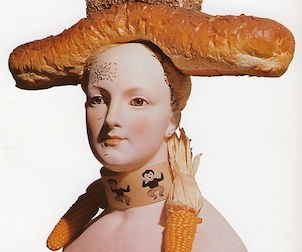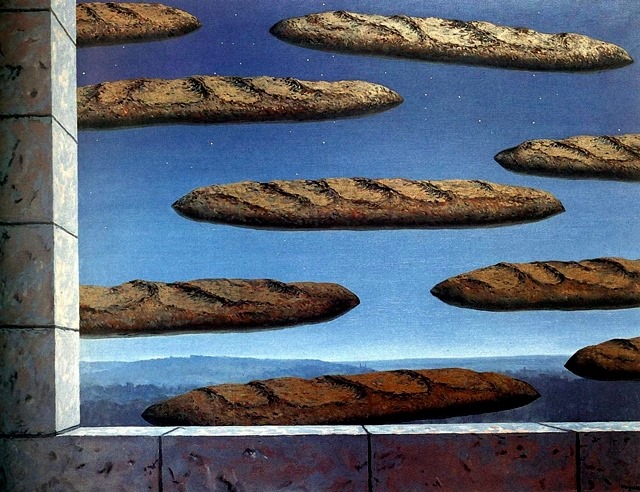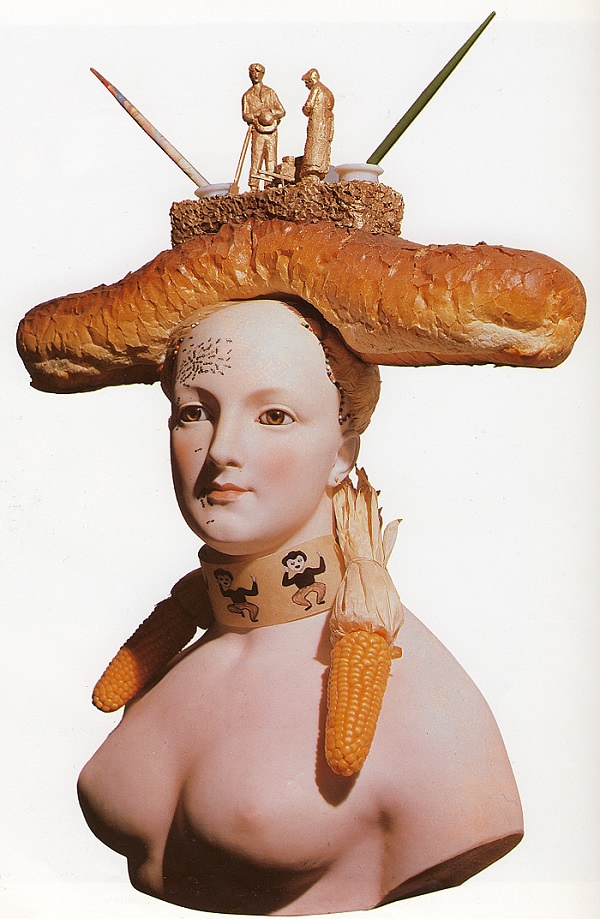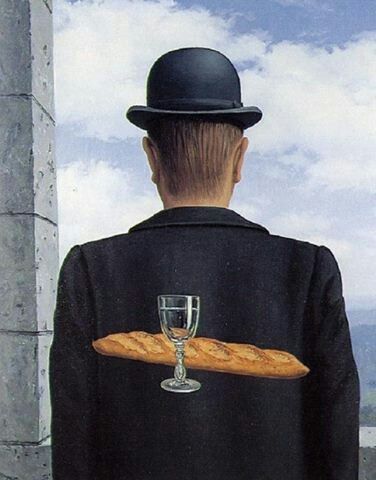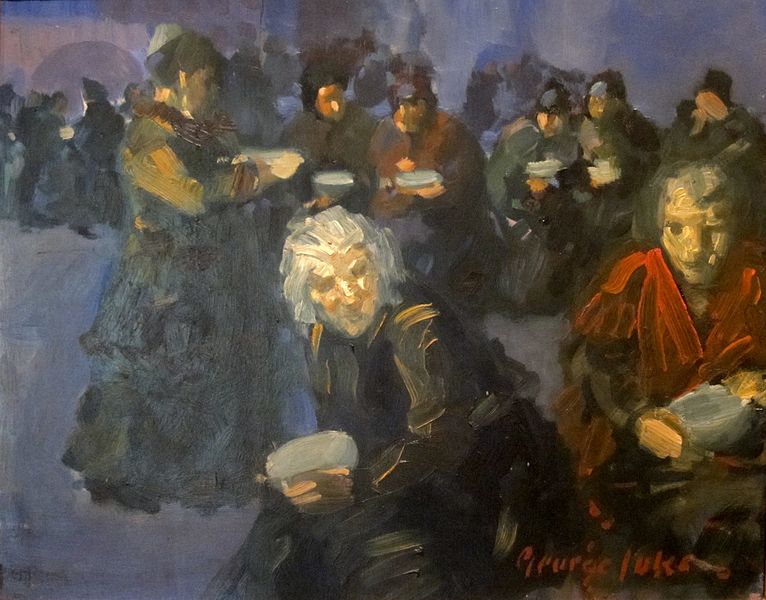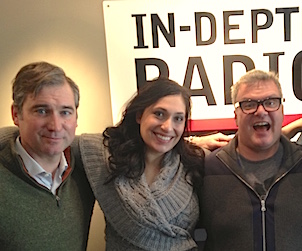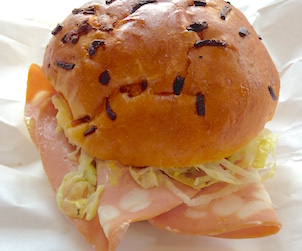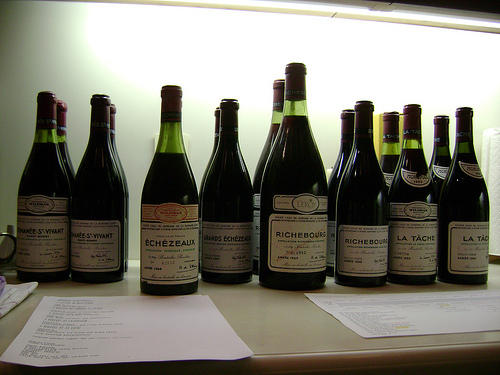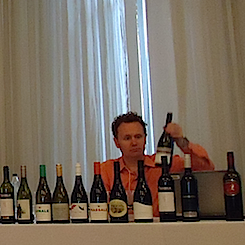Lorette C. Lujazic’s latest Wine & Art column looks at her life after bread.
Life without bread is different, I think, from life without crustaceans, or peanuts, or pork.
When it first happens to you, you have to come to terms with it in ways that you’re not expecting.
If you’re like me, you dance back and forth, in and out of it, like a bad relationship where you are always breaking up, again.
Abstinence is much less painful, but you convince yourself it won’t hurt you, that your love is all that matters.
Those around you don’t know what you know, so they try to convince you it’s all in your head, or that moderation is more reasonable than kicking it to the curb. Even doctors tell you that everything you know you know must be about something else.
But even so, you can’t blame everyone else. It is pure and simple temptation to which you succumb. It is your own longing that drives you back into the arms of your pumpernickel. Then, covered in obscene rashes and puffy eyed, you cry alone for days without him, until you come to your senses for the umpteenth time, and move on.
I’m crazy about oysters, so allergies or religious restrictions would be a sacrifice indeed. And the end of my West African Peanut and Collards Soup winters would be truly unfortunate, should I be one of those kids who cannot breathe within four square miles of a peanut. But the humble loaf is something else altogether.
The damn stuff is holy.
It is ingrained (an intentional choice of words) on our collective psyche that bread symbolizes sustenance. In a sense, bread symbolizes breath. It is goodness itself. It feeds the rich and poor alike. Bread is perfect simplicity. It is hospitality. It is squeaky clean, wholesome, hearty, healthy, essential, ordinary, and profound.
It’s the ultimate emblem of a person’s earnings. We view bread as currency. We do say he “brings home the bacon.” We also say, “she puts the bread on the table for the family.”
And delicious. A chewy crust dipped in balsamic, a French stick dipped in cheese and wine. A thick slab of German rye, or a sourdough, with a generous daub of butter. Ciabatta, pulled out by the fistful to sop up squash soup, or down with smoked salmon.
When I was young I read a book called Ginnie and the Cooking Contest (by Catherine Woolley). With all the exotic possibilities of gelatin salads and souffles, Ginnie needed a winning strategy, not just a tasty dish. She pared everything back to the beginning, and offered up fresh baked bread, made from scratch. She served it to the judges warm with plain butter, and hit a home run.
Three decades or so later, my family wandered wearily into our hotel in Jerusalem, and we were greeted with bite sized bits of beautiful bread for dipping into the olive oil and za’atar. This gesture of welcome and the memorable taste of simple goodness moved me to tears.
Coming to terms with wheat’s toxicity for my body actually requires ongoing deprogramming. I am often seized by irrational jealousy when a warm and doughy lump comes to the table with a little bowl of balsamic.
Some celiac sufferers substitute, but I have found there’s no point to that. While rice flour is a godsend allowing me free rein at most Asian noodle houses, somehow it doesn’t translate well into bread. Instead of substitution, I sublimate with art.
I might be the only one trolling art history due to bread lust. It’s a recurring theme as far back as we have gone in discovery of painting.
It is comforting, somehow, to see the heads of pilgrims bowed over a bowl and crust, or ancient Egyptian walls covered in carvings or paintings of wheat thrashing, milling, and loaves of bread.
Just from these examples, we see slavery, we see pagan agricultural gods, we see thanksgiving. It is all of this that I am interested in, how the meaning of bread is so intimately tied in our history and imagination to the meaning of life.
Bread’s importance to human history is not just symbolic; it is unique among all foods because it changed human societies from purely nomadic, hunter-gatherer tribes into stationary ones. Thus, it is literally the hinge upon which civilization rests. Growing grain meant being able to stay put. The dawn of agriculture, which meant societies could provide their own food, meant we were able to put down roots. In turn, this meant human endeavour could move beyond sustenance and daily provision, allowing the development of what we call culture, from building permanent cities to written linguistics, preserved artifacts, and lasting artistic, culinary, and religious heritage.
Unearthing tombs and other architecture and relics from Egypt’s glorious past, we find a great many paeans to bread. Countless paintings and carvings show the agriculture of grains, with peasants and slaves of course doing the dirty work to maintain luxury for the royal class. We discover from a relief found in a grave that “sliced bread” sat already on tables four and a half millennia past.
Jump ahead to the modern era. The outrageously eccentric Salvador Dali is not well known for his realism, but my favourite of his paintings is a plain old basket of bread.
On a simple wooden table, against a stark black background with nothing in it, sits a loaf of bread inside a wicker basket.
In terms of dramatically depicting the laws of composition, this painting is flawless. In design, a slight asymmetry is preferable to a dead centre focus. Here, the rule of thirds both ways is just enough off kilter to be perfect. The masterful linear emphasis of the elements in the painting weight our attention just below right of centre, even as the actual imagery sits just below left of centre.
Dali’s repertoire includes so many melting clocks, hybrid figures, and strange wonderlands that few viewers or critics or curators emphasize the selection of loaves he painted. But the artist himself was quite keen on them.
If it was meaning, and not carbs, that I wanted, I was definitely in the right place. Dali called this 1945 Basket of Bread “the most esoteric and Surrealist of anything I have painted to date.” Of a loaf of the same title, 20 years earlier, he said he’d been fascinated by the “power of its density” and the “mystical, paroxysmic feeling” the bread evoked.
Dali’s art was an outlet for a wide variety of anxieties, and one of them was bread. It recurred periodically throughout his oeuvre. Seldom did he paint the kind of still life or realism as in the two baskets: sometimes he used the bread itself as a medium.
Some followers conclude from Dali that bread is phallic and others say it represents stupidity. It’s hard to tell from MOMA’s Dali sculpture, a bust called Woman with Bread. The porcelain beauty is wearing corn cob earrings and a French stick on her head.
Not to be outdone, Rene Magritte gave Dali a run for his butter with recurring loaves of his own. The baguette appeared in multiples, floating past the window like a fleet of UFOs. In another painting, the loaf sits at the table’s edge, staring out the window into the night. In still another, the French stick hovers behind the back of the mysterious bowler-hatted figure, accompanied by what I fancy to be a goblet of Sauvignon Blanc.
Forget the moustachioed wit of Dali and the uncanny loaves of Magritte. If they imbued loaf paintings with cryptic and visceral symbolism, they were just following a long line of painters.
Still life paintings are one of the most loved genres in art. We all love them. The hyperreal quality of still life art is miraculous; how can someone render so exactly an ordinary object? But perhaps it is the double entendres that make still life painting so enduring.
On the one hand, they are straight up representational. An apple, a tea cup, a pocket watch. What you see is what you get. But on the other hand, the familiar groupings of everyday object tell a story that is richly symbolic.
Still lifes, at their start, were not about “still life” at all. They were about the fluctuation and movement of life, about the illusion of the tangible. They addressed the temporal by freeze-framing mundane moments and rendering their beauty and doom with careful precision, with attention to detail and light.
Our most concrete and routine objects were subject to artist’s and audience’s careful scrutiny, but only so we could see them fleeting past.
This is why so many early still life works showed clocks or skulls along with those bowls of apples. And fruit itself was dense with allusion- to nourishment, and to decay. Bread represented the gift of sustenance and life.
Sixteenth century Flemish painter Clara Peeters painted a lot of bread.
For the few female artists of her era, the early seventeenth century, still life was an accessible genre. Women were not accorded the same access to the study of anatomy as were males, lest they suffer indecent exposure to the facts of life. Since they were, naturally, more privy to those facts of life than many men and most academics, still life, rife as it was with underlying symbolism, was a great place to be.
George Luks is an underrated American artist who, along with his peers in the informal “Ash Can” school of art, dwelt on urban, working class themes, shirking the conventions of painting they saw as sentimentalist and genteel. Although he is well known to art historians and buffs, among the masses, he is overshadowed by Edward Hopper and George Bellows. Whether busy market scenes, or emptied nighttime streets, Luks’ works were moody and atmospheric, often impressionistic. The academic traditions are strong undercurrents, softened or perhaps distorted by a bit of theatre.
It’s an intriguing mix. If anyone can dazzle by Dickensian bent, it is Luks. Some have said that his disconcerting leaps of imagination and his inconsistency were for want of mature development; others, myself among them, declare him a genius whose wildly diverging moods yielded unique insights and experiment in style, often within a period or even a piece.
The Bread Line is one of his best known and stand-out works. It ranks alongside those depression photographers who captured the quotidian curse of hunger with newly accessible technology, stark documents to history repeating itself. Luks painting was luxurious in contrast, daubs of indigo and cobalt and crimson thickly smudged on canvas. But the desperation of hunger in empty faces, mere hollow eyed gashes, rivaled the intensity of any documentary photo.
This is the painting that comes into my mind anytime I get the urge to feel sorry for myself for having to consume, instead of a marble slab of rye with Havarti, or a billowy, buttery mouthful of croissant, a heap of gorgonzola-smothered near-raw beef or sea salt caramel with prosciutto. The ghosts from this painting literally materialize out of the ether to wag their fingers at me, Luks’ strange and desperate figures, themselves haunted by the hounds of hunger.
If my lifelong lent of breadlessness is just a way to perpetually remember to be thankful, then it may be that my giving up gluten is really a kind of gift.
Wine List
Not by bread alone: my favourite wines for pairing with the art, or even a sandwich.
Apothic Dark
This darker side of Apothic Red’s insane juicy goodness keeps threatening to leave the shelves forever. Rush out right now and find a few bottles willing to go home with you. It’s everything it promises- delicious, and compelling with deep, cakey layers. It’s a sweet and smoky kohl that at times turns chocolatey like semi-sweetened brownies. It’s density dances surprisingly lightly on your tongue. Every swallow offers a kaleidoscopic explosion of different flavours that wash over you in soft waves. Totally seductive.
This one changes face when paired with bold cheeses, and again when it accompanies spicy Tex-Mex or burgers. But it’s always waiting to get you alone, and by itself is the best way to get to know her. See more here.
Beronia Rioja
Here’s another wine I mention often. This is my favourite bargain wine. It really shouldn’t be a mere 13$, and I’m glad it is. It is a tremendous performer, consistently so. It went up a few quarters lately, and I’d still pay twice as much if I had to. Sometimes I do when Beronia has a label available for $29.95 or $40, I declare it to be a special occasion.
Here are all those dramatic, chewy notes I long for- granite and leather and laundry detergent and smoked fish and dehydrated fruit, sticky and bright yet dry as an old nun. Truly divine. The more you pay, the silkier these tougher qualities become, but the basic platform is stunning. See more here.
L’Orangeriae Rosé
Now here’s an uncharacteristically diaphanous favourite of mine. You’ve heard me refer affectionately to this as “baby aspirin wine.” Indeed, the colour is a transparent version of Benefit’s Dandelion Brightening Powder blush, and it tastes like it’s namesake and chalk pastels. See more here.
Wine Rack Staples
The main advantage of the Wine Rack is that they are open until eleven.
It can be kind of bleak if you’ve missed your local LCBO or boutique shops. But the Jackson-Triggs Grand Reserve Chardonnay is wonderful. They recommends you pair it with buttered popcorn or lobster: in other words, anything goes. It tastes like pear jam and applesauce and vanilla beans and tea. Things could be a lot worse.
There’s a sweet little honey of a plonk here too, for less than a tenner. Naked Grape’s Luscious Red is a crowd pleaser that can sort of satiate the food snobs on your guest list, even if they won’t admit it. It’s a Jolly Rancher in a bottle. See more here.
McManus Cabernet Sauvignon
A welcome staple of the LCBO’s “always available” promise. This wine is an easy access wine that everyone can enjoy, but it’s still got a wood smoke kick, a first kiss of sticky fruit and vanilla, and some tannic heft. For those times you want a sweet tooth, there is a gorgeous hint of caramel or burnt sugar, even though it’s super dry. A small apple has eight times as many carbs as you’ll get in the entire bottle. See more here.
Angel’s Gate Gewurztraminer VQA
I love the generous variety of flavours in a Gewurtztraminer, where you can chew on a mouthful of flowers and huff some exotic spices, all in a bright and fruity white. I don’t believe in keeping flavourless, utilitarian white wine on hand “for recipes” – mussels are an easy heaven steamed with this stuff instead. See more here.
Find out more about Lorette C. Luzajic at mixedupmedia.ca.

